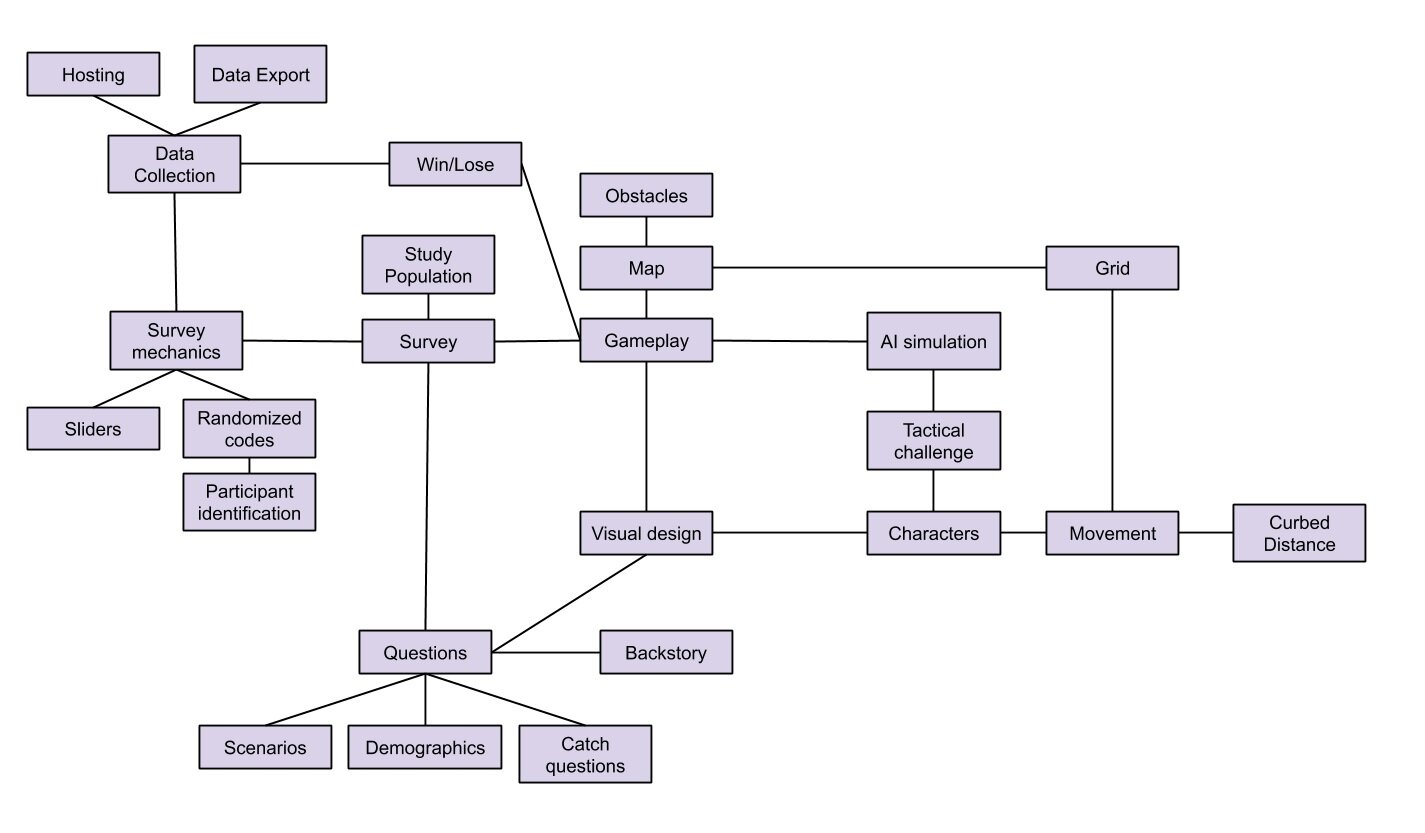Logic and Blueprints
To implement the gameplay logic, as well as everything required to generate, track, and measure data, I utilized Unreal’s blueprints in this project.
There is only one blueprint for both types pawns in the game which contains all their major functions. The individual classes inherit the defined properties and modify variables to receive their unique features, for example range, or color. The setup allows for a seamless introduction of additional classes.
Displayed is the main pawn material, where their properties are changed depending on class, team, and remaining health. As player team, color and NPC-faces change on every playthrough, a high level of modifyability was required.
To change team colors and icons on the fly, I used a function, which receives its input based on the current configuration.
Prototyping
To allow for easy iteration, I prototype important gameplay systems. For example, I utilize a pen & paper prototype to quickly identify design flaws and change the gameloop accordingly. Usually only after having examined my concepts through these inexpensive means, i begin translating them into the engine.
The chart illustrates the first draft of everything participants will see during a playthrough.
Shown is visualization of what core gameplay would be like. This method allowed for rapid iteration during this phase of development.
The graphic shows an early draft of the field layout, that was tested in the pen & paper prototype.
Most modifications to the game layout and its rules happened in this stage. No big changes in design were necessarcy, once I started executing my ideas in the engine.
Before starting implementation, I created a diagram of all important aspects I needed to keep track of during development. This allowed for easy planning and effective time management.


















